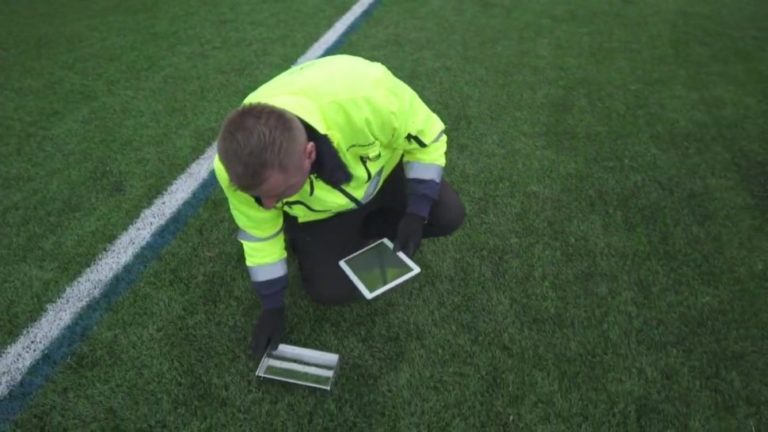Maintaining a sports pitch is essential for ensuring safety, performance, and longevity. Whether it’s a football field, rugby pitch, or cricket ground, proper maintenance is key to preserving the integrity of the playing surface and providing athletes with an optimal environment. This guide looks at the fundamentals of sports pitch maintenance to help groundskeepers and facility managers keep their fields in top condition.
Regular Inspections
The first step in effective pitch maintenance is regular inspections. Inspect the field for any signs of damage, such as divots, uneven surfaces, or worn areas. Addressing these issues promptly can prevent them from worsening and ensure player safety.
Mowing
Proper mowing with zero-turn mowers is crucial for maintaining a healthy sports pitch. Set the mower blades at the appropriate height for the type of grass on the field, ensuring a consistent and even cut. Mow regularly to keep the grass at the desired length, but avoid cutting more than a third of the grass height at a time to prevent stress on the turf.
Aeration
Aerating the pitch helps improve soil structure and drainage, promoting healthy grass growth. Use a core aerator to remove small plugs of soil, allowing air, water, and nutrients to penetrate the root zone. Aeration should be done at least once a year, preferably in the offseason or during periods of low activity.
Fertilization
Proper fertilization is essential for providing the grass with the nutrients it needs to thrive. Conduct a soil test to determine the specific nutrient requirements of the turf, then apply a balanced fertilizer accordingly. Avoid overfertilizing, as this can lead to excessive growth and increased susceptibility to disease.
Irrigation
Adequate irrigation is vital for maintaining optimal soil moisture levels and preventing drought stress. Water the pitch deeply and infrequently, ensuring that the soil is moist but not waterlogged. Monitor weather conditions and adjust the irrigation schedule accordingly to avoid overwatering or underwatering.
Overseeding
Over time, grass on sports pitches can become thin and worn out due to heavy use. Overseeding helps to replenish the grass population, filling in bare spots and improving turf density. Choose a high-quality seed blend suitable for the specific conditions of the pitch, and overseed annually for best results.
Eliminate Weeds
Weeds not only detract from the appearance of the pitch but can also compete with the grass for nutrients and water. Implement a weed control program to keep unwanted vegetation at bay, using herbicides as necessary. Selective herbicides target specific weed species while minimizing harm to the surrounding grass.
Disease and Pest Management
Diseases and pests can wreak havoc on sports pitches if left unchecked. Monitor the pitch regularly for signs of disease or pest infestation, such as discolored patches or damaged turf. Implement cultural practices, such as proper irrigation and aeration, to minimize the risk of disease, and use pesticides judiciously if needed.
Line Marking
Clear and well-defined lines are essential for facilitating gameplay and ensuring fairness. Mark the lines of the pitch using high-quality paint or chalk, ensuring they’re straight and accurately positioned. Refresh the lines as needed to maintain visibility and clarity.
Post-Game Maintenance
After each game or event, conduct post-game maintenance to assess any damage and make necessary repairs. Fill in divots, repair worn areas, and address any other issues promptly to keep the pitch in top condition for the next use.
By following these guidelines and implementing a comprehensive maintenance plan, groundskeepers and facility managers can ensure that sports pitches remain safe, playable, and aesthetically pleasing for both athletes and spectators alike.
